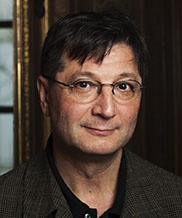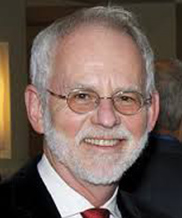Situated Activity, Distributed Intelligence and Action Pathways
Global Innovation Leadership Program
November 9, 16, 20, and December 7 plus1 additional hour long session
The Global Innovation Leadership Program by mediaX at Stanford University is a program that fills a critical gap for mid-career technology executives who aspire to lead break-through research and innovation in their organizations. In this program for researchers in mediaX member organizations, mediaX provides a unique opportunity to learn from leading scholars from Stanford and affiliated organizations, along with inspired innovators from our member community.
In this five session virtual program (November 9, 16, 20, and December 7 plus1 additional hour long session), academic and industry researchers will work side-by-side to explore user-centered distributed intelligence, through materials, competencies and activities. These are the fundamental elements of a new framework of activity-centric design, called Installation Theory. It introduces new ways of observing how people think, reason and behave in situated activities. Insights from such analyses help designers and engineers evaluate contextual influences on users, in order to create effective behavior and action pathways.
With a unique combination of Scholars and Practitioners from Stanford’s deep strengths in the human-technology intersection, and in a collaboration setting with hands-on teamwork, we will tackle case studies to learn new research methodologies and tools by embodying them in practice.
Participants will leave the program with a deep and broad understanding of the content and a hands-on toolbox filled with critical analysis and systems thinking skills that they can apply to other complex problems. Participants will also take home a deeper self-awareness of leadership strengths, weaknesses and growth areas, as well as a network of experienced colleagues.
Learning Outcomes:
*How to identify the materials, competencies and activities of Distributed Intelligence.
*How to do activity analysis with Activity Theory
*How to design a new product/service with the distributed architecture and experience optimization of Installation Theory.
*Participation in two cutting-edge case studies.
*Quick prototyping and presentation of a new business idea.
*Experience in a design charrette with people from other organizations.
Registration:
Registration is open to employees of mediaX member companies and to Stanford faculty and advanced students.
Please email Addy Dawes to confirm your eligibility for this workshop.
Presenters

Saadi Lahlou is Professor and Chair in Social Psychology at the London School of Economics and Political Science, and Director of the Paris Institute of Advanced Study. His most recent book: Installation Theory. The Societal Construction and Regulation of Behaviour (Cambridge University Press, 2017) has received international acclaim for its contribution to activity-based design.
He directed 4 other research units before this: the Consumer Research department of the Centre for Lifestyles and Social Policies (Crédoc, Paris), the Social Forecast Group at Electricité de France, the Laboratory of Design for Cognition at EDF R&D (the largest industry living lab at the time, which he founded and directed for 10 years), and the Department of Social Psychology at the London School of Economics and Political Science. He was a member of the steering committee of the Commissariat Général du Plan (French Prime Minister's office), and he is a member of the boards of many organizations at national or European level and research programs. He has written 200+ papers, 5 books and many reports. He developed new methods of investigation in behavioral change, text mining, consumption process analysis, action research for innovation, and digital ethnography.

Roy Pea is the David Jacks Professor of Education and the Learning Sciences at Stanford University, Co-Founder and Faculty Director of the H-STAR Institute, Faculty Director of mediaX at Stanford University, Director of the PhD Program in Learning Sciences and Technology Design, and (Curtesy) Professor of Computer Science. He has published widely on K-12 learning and education, especially in science, math and technology, and has a special interest in advanced technologies including scientific visualization, on-line communities, digital video collaboratories, collective intelligence, and mobile computers.
Since 1981, Dr. Pea has been exploring how information technologies can support and advance the scientific understanding and practices of learning and teaching, with particular focus on topics in science, mathematics, and technology education and their associated symbolic and communicative interchanges that are integral to learning. His current work is examining how informal and formal learning can be better understood and connected, as well as developing the DIVER paradigm for everyday networked video interactions for learning and communications. Other current research includes the influence of point of view on video-supported learning and collaboration; precollege mobile science inquiry and learning with sensors; and informal math learning in families. He is co-author of the 2010 National Education Technology Plan for the US Department of Education, was co-editor of the 2007 volume Video Research in the Learning Sciences, and co-author of the 2000 National Academy volume How People Learn.

Aditya Vishwanath is a Ph.D. student in Learning Sciences and Technology Design and a Knight-Hennessy scholar at Stanford University. His research takes a human-centered approach towards developing immersive learning experiences, leveraging emerging technologies. Previously, he worked with the Google Education team where he studied how low-cost virtual reality toolkits could be integrated into school curriculum. He co-founded Inspirit, a platform that hosts immersive science simulations, and is a member of Jagrit Labs, a research makerspace and incubator that nurtures underserved youth in urban Mumbai.

Maxi Heitmeyer is a PhD Candidate in the Department of Psychological and Behavioural Science at the London School of Economics and Political Science. His research tries to improve our understanding of how people use their smart devices and social media in everyday life. To do this, he uses sophisticated digital video ethnography techniques (SEBE) to study how users interact with their devices in naturally occurring contexts, what routines and behavioral patterns they have developed, and how this influences their decision-making processes, particularly regarding the use of time and the direction of attention. Maxi’s research interests revolve around ICT use, smartphone & social media addiction.